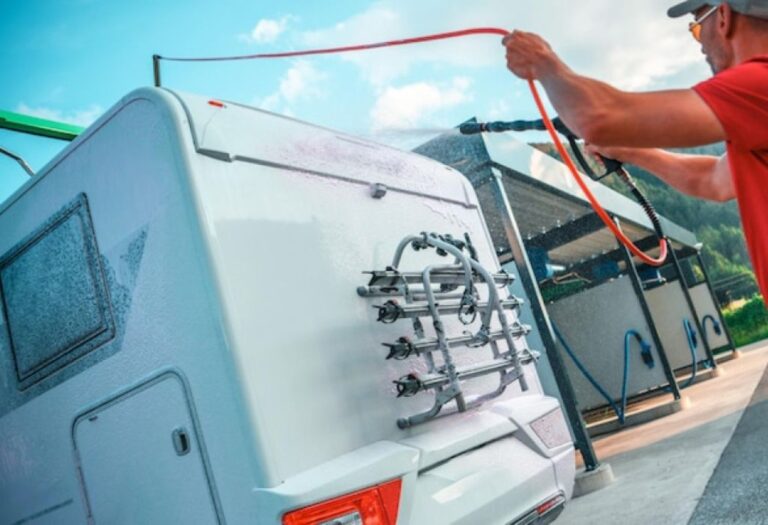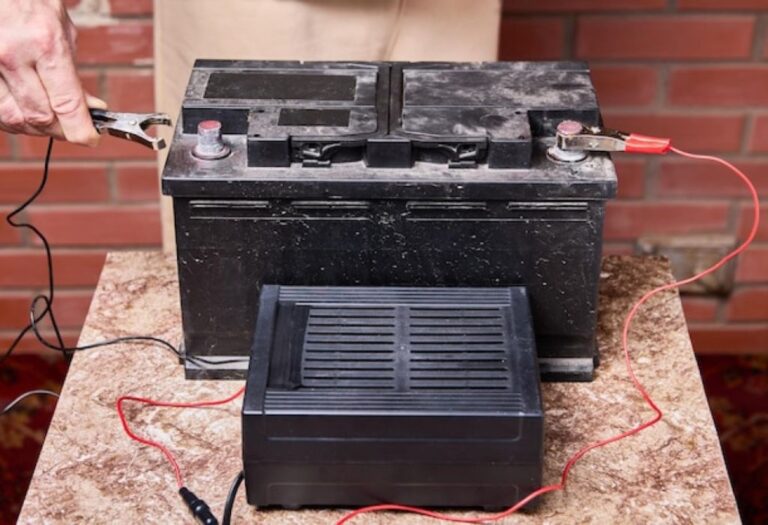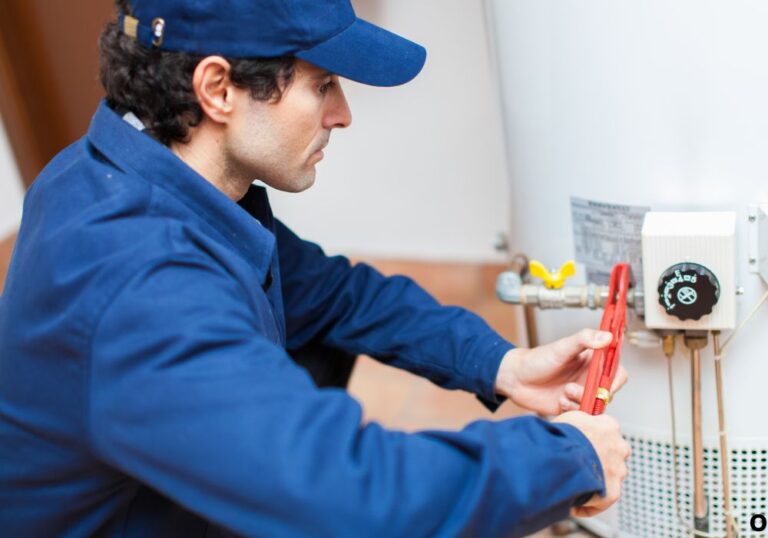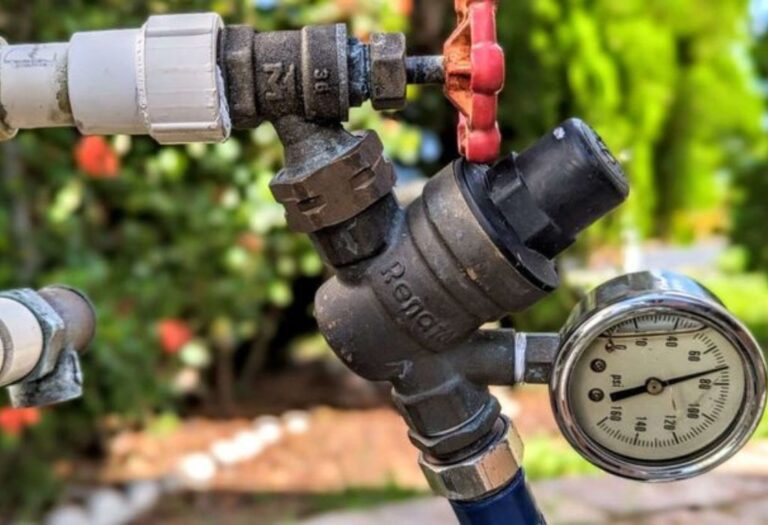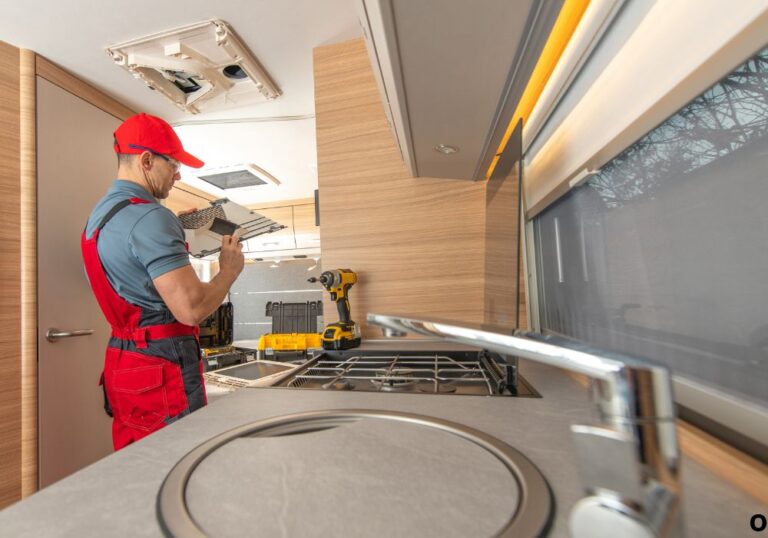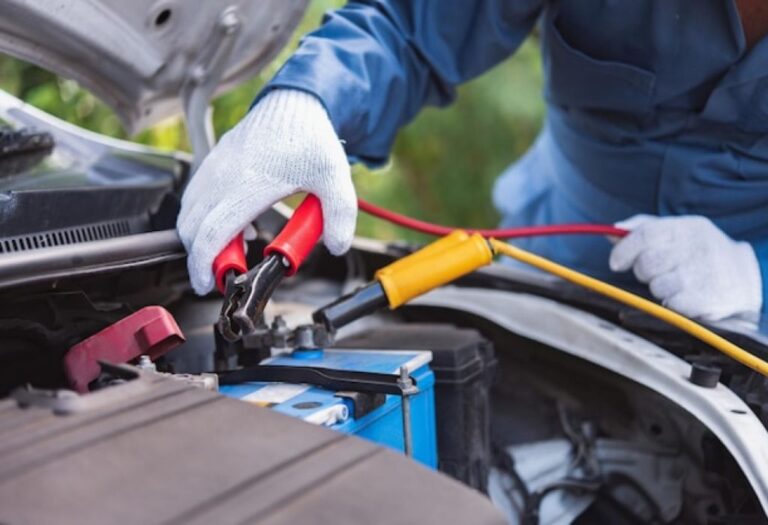How to Sanitize RV Water Lines the Right Way
Few RV owners realize that hidden inside their water lines, bacteria can multiply up to 16 million times in just 24 hours when the system sits unused . It’s a quiet threat — one that can turn clear drinking water into a health hazard, especially after long storage or travel in warm weather.
Picture this: you fill your tank at a fresh mountain campground, turn on the faucet, and smell something strange. That faint musty odor or metallic taste isn’t just unpleasant — it’s a warning sign that your RV water lines may be contaminated. Over time, minerals, algae, and microbial biofilm can build up inside hoses and tanks, reducing water quality and creating potential health risks.
Sanitizing your RV water lines isn’t just a maintenance task; it’s essential for safe, odor-free, and great-tasting water on every trip. The process is simple, yet often overlooked — a mix of correct bleach ratios, contact time, and proper flushing. According to RVIA studies, nearly 60% of RV owners admit they sanitize less than once a year, despite manufacturer recommendations to do it every six months (RVIA.org).
This guide will walk you through how to sanitize RV water lines the right way — step by step. You’ll learn what causes contamination, how to prepare your system safely, and the most effective methods to ensure your RV’s water stays clean and healthy, no matter where the road takes you.
What Does “How to Sanitize RV Water Lines” Really Mean?

Sanitizing RV water lines means cleaning every part of your RV’s plumbing system that carries fresh water — from the tank to the faucets — to remove bacteria, mold, and mineral buildup. It’s not just about clear water; it’s about keeping your system safe for drinking, cooking, and cleaning.
Water systems in RVs can easily collect microorganisms when left unused. These microbes multiply in damp, dark spaces, especially during storage or after using questionable water sources. Regular sanitation ensures that the lines remain free from harmful contaminants and bad odors.
What are “RV water lines” in this context?
RV water lines are the pipes and hoses that transport fresh water throughout your vehicle.
Why is sanitizing the water lines important for an RV?
It keeps bacteria, algae, and odors from spreading into your water supply.
Which parts of the system are included when sanitizing water lines?
It covers the fresh tank, plumbing lines, faucets, and any component carrying potable water.
How often should the water lines be sanitized?
Every six months or before the first trip after storage is ideal.
Does sanitizing include the fresh tank or only the plumbing lines?
Yes, both are cleaned together since the tank feeds the system.
Common Risks & Problems When RV Water Lines Are Not Sanitized
When RV water lines aren’t sanitized, bacteria and mold can thrive, turning clean water into a breeding ground for contamination.
Unpleasant odors, bad taste, and even stomach issues can result from neglected systems. Stagnant water promotes biofilm formation — a sticky layer where bacteria and fungi multiply rapidly.
What contaminants can build up in RV water lines?
Common ones include E. coli, algae, and sulfur bacteria that produce foul odors.
How quickly can bacteria grow in stagnant RV water?
Within 24–48 hours, microbial colonies can form in uncirculated water (Healthline).
What are the health risks of un-sanitized RV water lines?
Exposure may cause nausea, diarrhea, and other waterborne illnesses.
How does long-term storage affect the water lines?
Moisture trapped in hoses fosters bacteria and corrosion buildup.
Can poor maintenance damage plumbing components?
Yes, mineral buildup can corrode fittings and reduce flow efficiency.
Preparing to Sanitize RV Water Lines (Tools, Safety & Planning)
Preparation is key to effective sanitization. Having the right tools ensures safety and thorough cleaning.
Before adding any chemical or solution, check your RV manual to confirm recommended methods and ratios.
What tools and materials are needed for sanitizing RV water lines?
You’ll need household bleach, clean water, a funnel, gloves, measuring cup, and freshwater hose.
What safety measures should be taken before starting?
Turn off the water heater, pump, and disconnect electrical power to avoid damage.
How to choose between bleach-based and alternative sanitizers?
Bleach is the most effective for deep disinfection, though hydrogen-peroxide or vinegar solutions are eco-friendly alternatives.
What steps should be done before adding the solution?
Drain the fresh tank and open faucets to empty old water.
Is it necessary to bypass filters or water heater?
Yes, bypass them to prevent chemical residue and damage to filters or heating elements.
Step-by-Step Process: How to Sanitize RV Water Lines
The actual sanitizing process is straightforward if done carefully and in the right order.
It involves mixing the proper bleach solution, circulating it through all lines, letting it sit, and flushing it completely afterward.
How to calculate the correct bleach concentration for the water lines and tank?
Use ¼ cup of bleach for every 15 gallons of water (Camping World).
What is the correct procedure to fill and circulate the solution?
Pour the bleach mixture into the tank using a funnel, fill with fresh water, then run the pump and open each faucet until you smell bleach.
How long should the sanitizing solution sit?
Let it rest for 12–24 hours to ensure full disinfection (Our Campfire Unplugged).
How to properly drain and flush the system afterward?
Open drains, refill with clean water, and run the pump until the bleach odor disappears.
Are there alternative eco-friendly methods?
Yes, some travelers use biodegradable sanitizing tablets or vinegar-based solutions (YouTube).
Troubleshooting & Best Practices for Long-Term Maintenance

Even after cleaning, it’s important to maintain your system regularly.
Ignoring small issues like chlorine smell or mineral buildup can shorten the lifespan of your plumbing.
What to do if there’s a persistent chlorine smell after flushing?
Run another full tank of clean water through the system until the smell fades (Fulltime Families).
How to avoid contamination between uses?
Always use designated drinking-water hoses and sanitize hose ends before connecting.
How often should filters and hoses be replaced?
Change them seasonally or per manufacturer guidelines to maintain water flow and taste.
What signs indicate the water lines might need re-sanitizing early?
Unusual odor, cloudy water, or reduced pressure signal microbial buildup.
How to protect rubber and plastic components during cleaning?
Never exceed the recommended bleach concentration and avoid prolonged soaking (John Marucci).
The Future of RV Water Line Sanitization & Emerging Trends
Modern RVs are integrating technology to make water sanitization easier and safer.
New systems use smart sensors and chemical-free disinfection to ensure fresh water at all times.
What new sanitizing technologies are available?
UV LED sterilizers and inline purification systems are becoming common (YouTube).
How might non-bleach methods impact maintenance?
They reduce corrosion risk and are safer for the environment.
Will smart sensors help maintain sanitation?
Yes, they alert owners to bacterial presence or when maintenance is due.
How are environmental concerns shaping sanitation methods?
Eco-friendly products with low-chemical impact are gaining popularity among RV users.
What is the predicted frequency of servicing RV water lines in the future?
Regular quarterly sanitization is likely to become the new norm for health-conscious travelers.
Summary & Quick Reference Checklist
Before hitting the road again, keep this simple checklist handy:
- Drain the water system completely.
- Mix ¼ cup bleach per 15 gallons of water.
- Add the mixture to the fresh tank.
- Fill the tank fully and run the pump to circulate.
- Let it sit for 12–24 hours.
- Drain, refill, and flush until there’s no bleach odor.
- Replace filters and inspect hoses regularly.
- Repeat every six months or after storage.
Conclusion
Learning how to sanitize RV water lines ensures every sip of water on your journey is clean, safe, and refreshing. It prevents bacterial buildup, eliminates odors, and extends your plumbing system’s life. Consistent sanitization, combined with good maintenance habits, guarantees that your RV water system stays reliable wherever the road leads.
Ready to get started? Print this checklist or bookmark this guide so your next adventure begins with confidence — and clean water in every glass.
I’m David R. Coleman, the founder, lead writer, and lifelong tool enthusiast behind GarageToolPro.com. With years of experience in automotive repair, woodworking, and home DIY projects, I created this platform to share practical tips, detailed tool reviews, and step-by-step guides that help mechanics, hobbyists, and homeowners get the job done right the first time.

